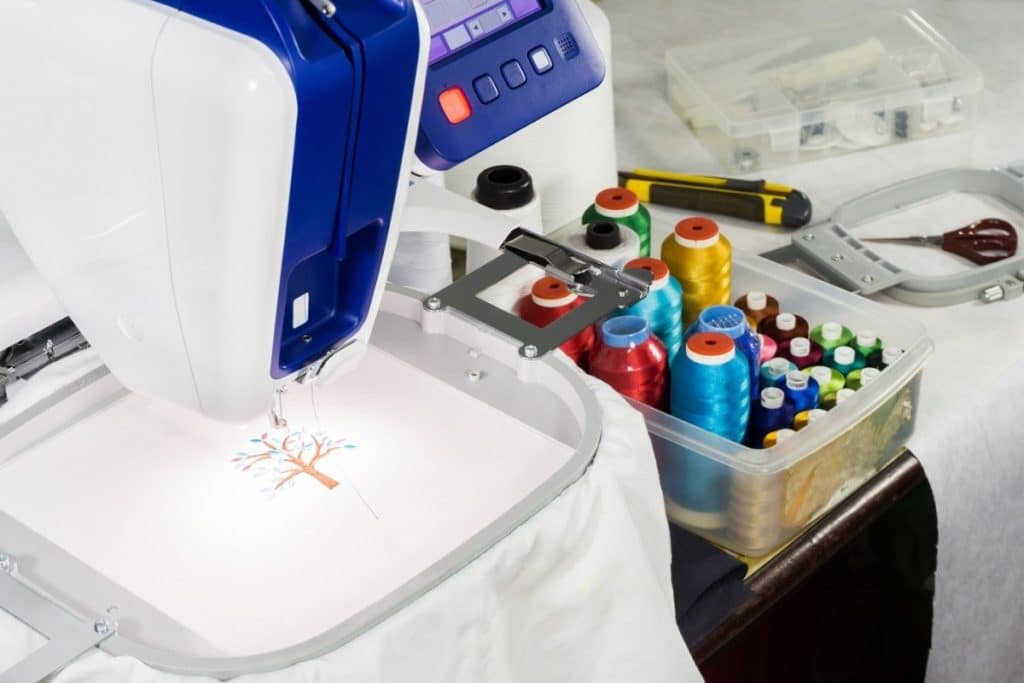
Machine embroidery result depends on multiple factors you are using – the fabrics, quality of the machine embroidery design, quality of threads, and hooping. Here we want to share quick 3 tips on hooping techniques you may need to know for the best embroidery result.
Why do I need hooping?
Hooping is an important part of the embroidering process, which involves securing the fabric tightly in an embroidery hoop to prevent any slipping or movement during the stitching process. Hooping techniques vary depending on the type of embroidery machine and fabric being used, but there are several basic tips that are essential for achieving high-quality results.
TIP #1 Use the right hoop size for the machine embroidery design
One of the most important aspects of hooping is choosing the right hoop size for the project. Hoops come in a variety of sizes, ranging from small hoops designed for stitching on cuffs and pockets to larger hoops suitable for larger designs. It is important to choose a hoop that is the right size for the design being stitched, as using a hoop that is too small or too large can result in uneven stitching or fabric puckering.
Once the hoop size has been determined, the fabric should be centered within the hoop and secured tightly using a hoop clamp or similar device. The goal is to keep the fabric taut without stretching it, as this can cause distortion or puckering during stitching. It is important to ensure that the fabric is not bunched up or folded over within the hoop, as this can result in uneven stitching or skipped stitches.
TIP #2 Use embroidery stabilizer
Another important hooping technique is using a stabilizer to reinforce the fabric and prevent stretching or distortion during stitching. Stabilizers come in a variety of types, including tear-away, cut-away, and water-soluble stabilizers. The type of stabilizer used will depend on the fabric being embroidered and the design being stitched. It is important to choose a stabilizer that is compatible with both the fabric and the thread being used, as using the wrong stabilizer can result in poor stitch quality or fabric damage.
TIP #3 Adjust the tension of the hoop
Finally, it is important to adjust the tension of the hoop to ensure that the fabric is held tightly during stitching. Most embroidery machines have a hoop tension adjustment feature that allows users to adjust the tension of the hoop as needed. It is important to check the tension regularly during stitching, as the fabric can loosen over time and require re-tightening.
So we can say that hooping is an essential technique in machine embroidery that requires careful attention to detail and precision. By selecting the right hoop size, centering and securing the fabric properly, using the appropriate stabilizer, and adjusting the hoop tension as needed, embroiderers can achieve high-quality results and create beautiful designs on a variety of fabrics.
Here you may find the newest machine embroidery design files for your projects:
-
Astra flower machine embroidery design instant downloadUSD 2.80 – USD 25.00
-
Patriots logo badge machine embroidery design instant downloadUSD 3.90 – USD 28.00
-
Nike ACG logo machine embroidery design instant downloadUSD 3.90 – USD 28.00
-
Philadelphia Eagles logo badge machine embroidery design instant downloadUSD 4.90 – USD 30.00
-
Philadelphia Eagles badge machine embroidery design instant downloadUSD 4.50 – USD 29.00






